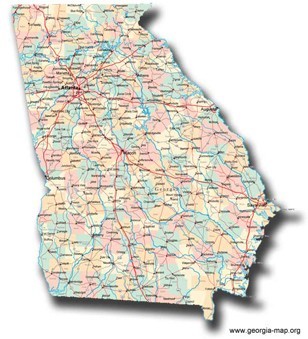Republicans hold both U.S. Senate seats and a majority of U.S. House seats. The GOP holds every statewide constitutional office and controls both chambers of the General Assembly. Republican presidential nominees have won the state's electoral votes in seven out of the last eight elections.
But a close examination shows the Georgia electorate is more closely divided than those results suggest. The difference rests in how the Republican Assembly has drawn congressional and legislative boundaries to their party's advantage.
Consider that nine out of 14 Georgia congressmen are Republicans, almost a 2-to-1 advantage. That's about the same split in the GOP advantage at the statehouse. Yet President Barack Obama managed 45.4 percent of the vote here in 2012. Four years earlier, he fell just shy of 47 percent.
Alongside the 2008 presidential race, Republican Sen. Saxby Chambliss had to go to a runoff to defeat his Democratic opponent. Now, with Chambliss retiring, Georgia is poised for another competitive Senate race in November.
``Republicans solidified their grasp on state politics through redistricting,'' wrote Democratic strategist Eric Gray in a recent analysis of Georgia's political boundaries. ``They've maxed out their influence.''
To be sure, both political parties have taken advantage of redistricting power that follows every Census. Still in power after the 2000 Census, Georgia Democrats drew maps so egregious that federal courts discarded them. And it should be noted that the Voting Rights Act which protects minority influence plays a role in concentrating Democratic-leaning minorities into districts. That scenario results in the election of many black Democrats, while neighboring districts elect white Republicans. Of Georgia's five U.S. House Democrats, four are black Democrats representing districts where a majority of the population is non-white.
Yet beyond those factors, Republicans have used their power in statehouses to ensure congressional and legislative results that are much less competitive if not out of step with statewide races. It's a disparity that goes beyond the simple explanation that voters sometimes split their ballots.
Perhaps most important in the post-2010 redistricting, Georgia lawmakers made sure that an additional House seat the delegation grew to 14 seats because of population growth meant that Republicans would pick up a new representative. The new maps gave GOP-heavy north Georgia one more seat than it had before. In central Georgia, Republicans moved Democratic-dominated precincts from GOP Rep. Austin Scott's district to Democrat Sanford Bishop's district. The move didn't directly result in a partisan shift, and arguably helped protect Bishop. But it also firmed up Scott's seat, which had been held by Democrat Jim Marshall before Scott's win in the GOP's 2010 national sweep.
One other key GOP move in a Democratic district hasn't paid off yet, but still gives Republicans a structural advantage in Democrat John Barrow's southeast Georgia district. The 2012 map forced Barrow, the Deep South's last white Democrat in the House, to move before he could even seek re-election, and he had to do so in a district where Romney would win 55 percent of the presidential vote.
Barrow survived, but he will remain near the top of Republicans' target list in each election cycle, and party strategists on both sides believe any open seat election in the district would be an easy GOP pickup. That would mean a 10-4 GOP advantage in the GOP delegation, at the same time that Georgia, as a whole, joins Virginia and North Carolina as a Southern presidential battleground state.

http://accesswdun.com/article/2014/3/273068
